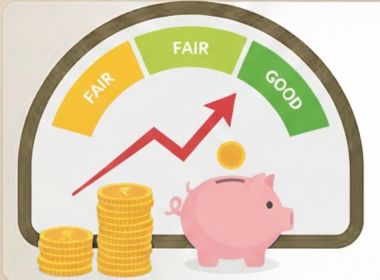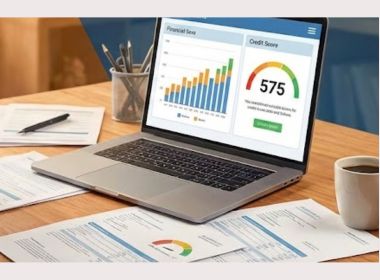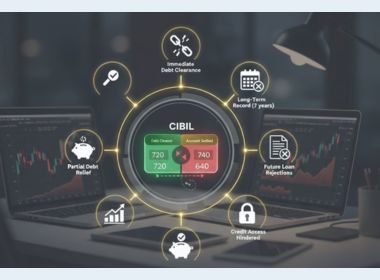Search Suggestions
- Gold Loan
- Money Transfer
- Mutual Funds

Difference Between Tier 1 and Tier 2 NPS: Which is Better for Retirement?
When planning for retirement and aiming for long-term financial security, many in India are turning to the National Pension System (NPS) as a reliable option. To choose wisely, it’s important to grasp the distinctions between NPS Tier 1 and Tier 2 accounts, along with the specific tax benefits each offers. Let’s understand what is Tier 1 and Tier 2 in NPS, the features of NPS Tier 1 VS Tier 2 and explore their tax advantages.
Table of Content
- NPS: A Brief Overview
- NPS Tier 1 vs NPS Tier 2: Differences Explained
- NPS Tier 1 vs Tier 2: Which is the Better Choice?
Nps: A Brief Overview
Introduced in 2004, the NPS is a government-backed pension scheme designed to ensure a stable income after retirement. Initially limited to government employees, it became available to everyone in 2009. As an annuity product, the NPS allows individuals to accumulate a retirement fund through regular contributions during their working years, with the collected amount accessible once they reach the age of 60.
Nps Tier 1 Vs Nps Tier 2: Differences Explained
The National Pension System provides two types of accounts—Tier 1 and Tier 2—that both aid in building retirement savings, yet they vary in terms of flexibility, withdrawal policies, and tax benefits. Here’s a breakdown of the primary differences:
Eligibility and Minimum Investment
- NPS Tier 1: Open to all Indian citizens aged 18 to 60 years.
- NPS Tier 2: Accessible only if you already have an active Tier 1 account.
The minimum contribution is Rs 500 for a Tier 1 account and Rs 1,000 for a Tier 2 account.
Lock-in Period
- NPS Tier 1: Funds remain locked until the investor reaches 60 years of age.
- NPS Tier 2: There is no lock-in period, offering greater flexibility for deposits and withdrawals.
Tax Benefits on Returns
- NPS Tier 1: Contributions qualify for tax deductions under Section 80C of the Income Tax Act, with annual deductions available up to Rs 1,50,000. Additionally, you can claim an extra tax deduction of Rs 50,000 under Section 80CCD(1B).
- NPS Tier 2: Contributions to this account type do not receive any tax exemptions.
Withdrawal Options
- NPS Tier 1: Withdrawals from an NPS Tier 1 account are not allowed until the account holder reaches the age of 60. At that time, up to 60% of the accumulated funds can be withdrawn, while the remaining amount must be used to purchase an annuity.
- NPS Tier 2: The withdrawal rule is more flexible in NPs Tier 2, allowing funds to be accessed at any time per the relevant rules and regulations.
Suggested Read : NPS Scheme Details: Everything You Need to Know About This Retirement Plan
Nps Tier 1 Vs Tier 2: Which Is The Better Choice?
Both NPS Tier 1 and Tier 2 accounts have their own advantages and disadvantages. While the Tier 1 account is designed primarily as a retirement investment tool, the Tier 2 account functions more like a standard investment account, offering greater flexibility with withdrawals.
The main distinction between these two options lies in their withdrawal rules. With a Tier 1 account, funds remain locked until you reach the age of 60. In contrast, Tier 2 allows you to withdraw your investment at any time without restrictions.
Additionally, at maturity, a Tier 1 account disburses 60% of your total NPS corpus, while the remaining 40% is used to purchase an annuity—providing a steady income during retirement. This tax benefitis not available with NPS Tier 2.
Another key factor is taxation. Contributions to a NPS Tier 1account come with tax benefits, potentially saving you up to Rs 62,400 per year, whereas Tier 2 contributions do not qualify for any tax exemptions.
If your primary goal is to build a substantial retirement fund while enjoying tax savings, a Tier 1 account is the preferred choice due to its disciplined, long-term structure. However, if you value immediate access to your funds, allocating a portion to a Tier 2 account might be beneficial.
Ultimately, the decision between NPS Tier 1 and Tier 2 hinges on your individual financial goals, investment style, and the level of liquidity you desire. While many investors opt for either a Tier 1 or Tier 2 account, it’s entirely possible to hold both. A new investor can open a Tier 1 and a Tier 2 account concurrently.
- Instant Personal Loan
- EMI Calculator
- Document Required
- Track Personal Loan
- Interest Rate
- Procedure and Eligibility
CATEGORIES
OUR SERVICES
-

Credit Score
-

Gold Loan
-

Personal Loan
-

Cibil Score
-

Vehicle Loan
-

Small Business Loan
-

Money Transfer
-

Insurance
-

Mutual Funds
-

SME Loan
-

Corporate Loan
-

NCD
-

PAN Card
-

NPS
-

Custom Offers
-

Digital & Cashless
-

Milligram Rewards
-

Bank Mapping
-

Housing Finance
-

#Big Business Loan
-

#Gold Loan Mela
-

#Kholiye Khushiyon Ki Tijori
-

#Gold Loan At Home
-

#Sunherisoch
RECENT POSTS

Understanding KDM Gold and Why it’s Banned
Know More
Gold loan boom: 3,000 new branches to open in India in 12 months
Know More
Gold Loan Boom: Rs 14.5 lakh crore market spurs NBFCs to add 3,000 branches
Know More
How BNPL Affects Your Credit Score
Know More
Inside the Muthoot money machine: How a Kerala family turned gold loans into a billion-dollar empire
Know More
Billionaire Family Turns India’s Gold Obsession Into a Fortune
Know More
What is a Cheque and its Different Types in India?
Know More
Benefits of Paying Your EMIs on Time: Why Timely Payments Matter
Know More
A Complete Guide to Report Online Fraud
Know More
How does a Personal Loan Affect your Credit Score?
Know MoreFIN SHORTS

What Are Co-Pay and Deductibles in Insurance Policies?
Know More
Should You Take a Loan Against Your Mutual Fund or SIP?
Know More
Top 5 Best Mid-Cap Mutual Funds to Watch in 2026
Know More
Are Personal Loans Right for Retirees? Key Points to Consider
Know More
What Happens to a Personal Loan After the Borrower Dies?
Know More
Best Loan Choices for Credit Scores of 580 and Below
Know More
7 Reasons Why a Gold Loan Is the Best Option for Small Businesses
Know More
10 Reasons Why People in India Prefer Physical Gold
Know More
Real Estate vs Gold: Which Is a Better Investment in India?
Know More
10 Common Mistakes That Make Investors Lose Money in Mutual Funds
Know More
10 Reasons Why Gold Has So Much Appeal in Uncertain Times
Know More
7 Ways Settling Debt Can Impact Your CIBIL Score
Know More- South +91 99469 01212
- North 1800 313 1212


